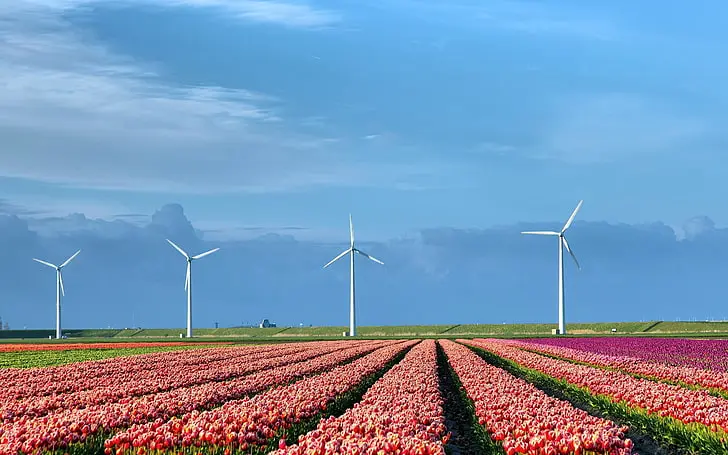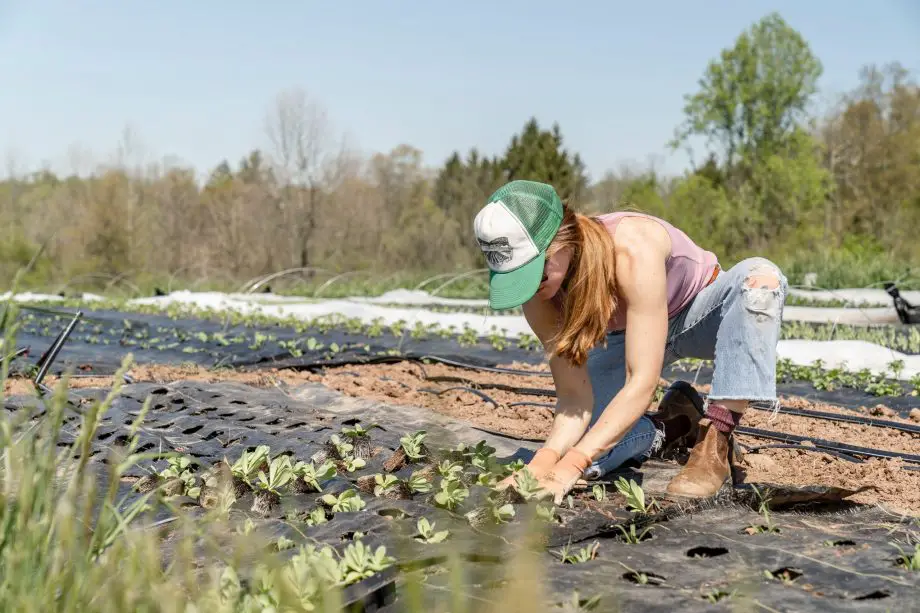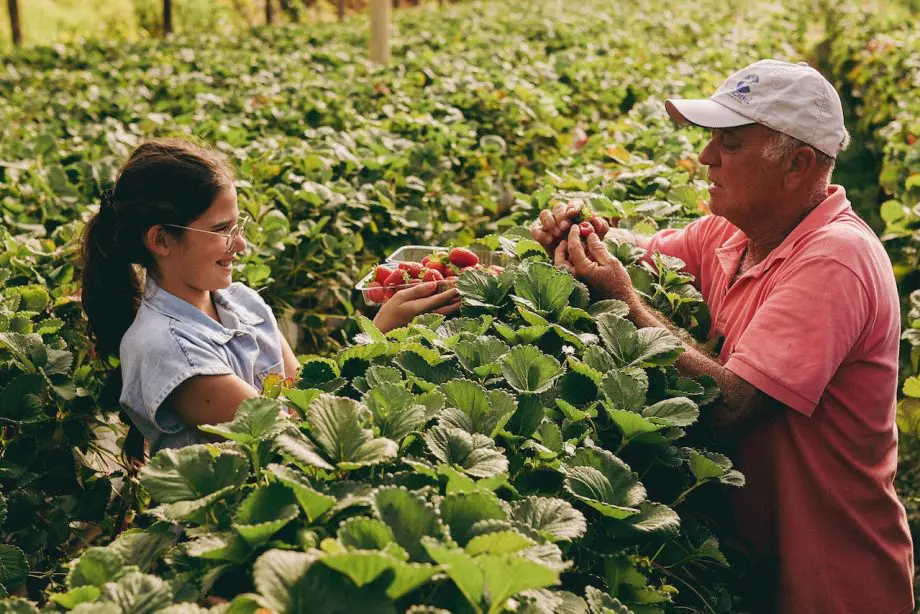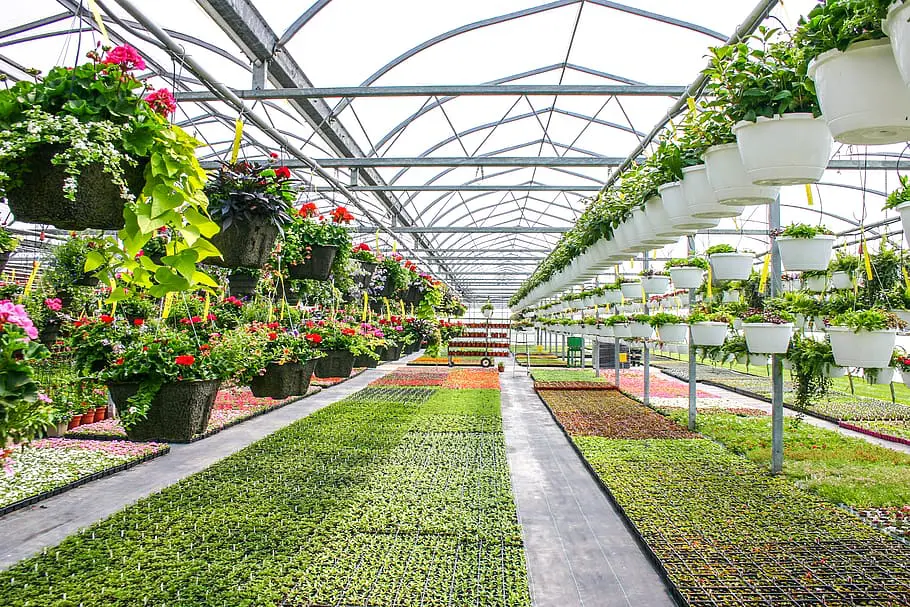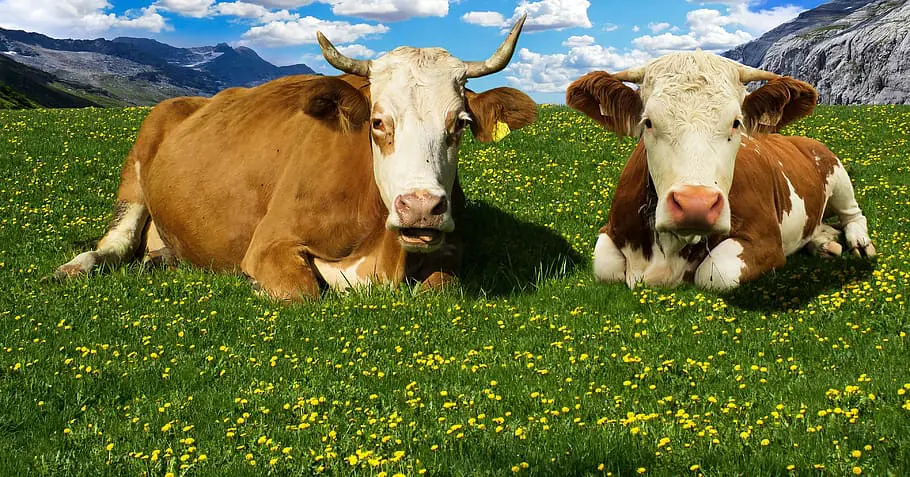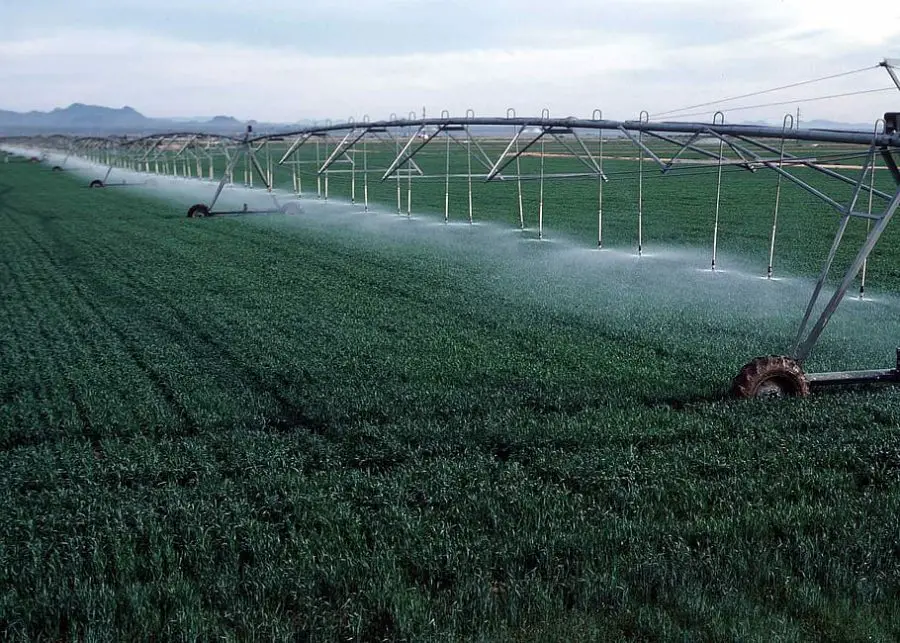
Discover the real story behind ‘water problems in agriculture’ and how it shapes our daily meals. Dive into solutions making a splash in the farming world!
Ever taken a moment to think about where your food comes from?
Well, behind that fresh salad or grain bowl you had for lunch, there’s a tale of water problems in agriculture waiting to be told.
It’s a story that intertwines the fate of our meals with the rhythms of nature, and trust me, it’s more gripping than any drama series you’ve watched lately. Let’s dive in, shall we?
Water Problems in Agriculture
Water problems in agriculture are challenges related to the availability, quality, and management of water resources. These issues include drought, over-irrigation, groundwater depletion, pollution, and climate change impacts. Such problems can hinder crop growth, reduce yields, and impact food security globally.
Ever paused to wonder about the journey of your morning coffee beans or the grains in your favorite cereal?
Behind every bite and sip, there’s a story of water and its role in agriculture.
In this post, we’ll unravel the intricate web of Water Problems in Agriculture, diving deep into challenges, their ripple effects, and the innovative solutions making waves.
Ready to embark on this enlightening journey? Let’s get started!
Importance of water in agriculture
Water, it’s not just what we eagerly reach for after a long jog or what fills our relaxing evening baths.
In the world of agriculture, water is like that secret ingredient in your grandma’s famous recipe.
It’s the lifeblood that nourishes crops, ensuring they grow healthy and strong.
Without adequate water, our farms would struggle, and those fresh veggies and fruits we love so much would be hard to come by.
Water plays a pivotal role in every stage of farming, from seed germination to crop maturity. It’s the unsung hero behind every plate of food we enjoy.
Brief overview of the challenges faced by the agricultural sector due to water issues
Now, while water is a blessing for agriculture, it’s not always smooth sailing.
Picture this: You’re trying to fill a bucket, but there’s a tiny hole at the bottom. No matter how much you pour in, it’s never truly full.
That’s a bit like the challenges our farmers face. From unpredictable droughts that leave fields parched to excessive rainfall causing floods, the agricultural sector is constantly battling water-related issues.
And it’s not just about quantity; quality matters too. Pollution and over-abstraction can turn this precious resource from a boon to a bane.
As we delve deeper into this post, we’ll uncover the myriad water challenges that farmers grapple with and explore the innovative solutions they’re adopting to weather these watery storms.
The Impact of Water Scarcity on Agriculture

Ever tried making a cup of tea with just a few drops of water? Doesn’t quite work, does it?
Similarly, in the vast world of farming, water isn’t just a ‘nice-to-have’. It’s absolutely essential.
But what happens when this crucial resource starts playing hard to get?
In this section, we’ll dive into the ripple effects of water scarcity on agriculture.
From the fields to our forks, let’s explore how a drop or lack thereof—can make waves in the world of farming. Ready to quench your curiosity? Let’s dive in!
Global water withdrawals for agriculture
Let’s start with a fun fact, shall we? Did you know that agriculture is like that one friend who always seems to be thirsty, guzzling down more water than any other sector?
Globally, farms pull out a whopping 70% of our freshwater supplies. That’s right, 70%!
It’s like filling up seven out of every ten water bottles just for farming.
This water is vital for everything from nurturing seeds to ensuring that mature crops stay hydrated and healthy.
But with an ever-growing global appetite, the demand for water in agriculture is only set to rise.
The competition between agriculture and other sectors for water
Now, imagine a tug-of-war game where agriculture is on one side and industries, municipalities, and households are on the other.
That rope they’re tugging at? You guessed it: our precious water.
As cities expand and industries boom, they too need their fair share of H2O. T
his means our thirsty friend, agriculture, often finds itself in a tight spot, competing for every drop.
It’s a delicate balancing act, ensuring that farms get enough water while also catering to our daily needs and the demands of booming industries.
The role of irrigation in maximizing crop production
Think of irrigation as the superhero sidekick to agriculture. When rainfall decides to play hard to get, irrigation steps in, ensuring crops get their regular water fix.
It’s like having a backup water supply, making sure plants never go thirsty.
By directing water straight to where it’s needed most, irrigation systems help maximize crop yields, turning barren lands into lush, productive fields.
It’s not just about quantity, though. Proper irrigation ensures consistent quality, giving us those juicy tomatoes and crunchy greens we love.
In a world where water is becoming scarcer, mastering the art of efficient irrigation is more crucial than ever. After all, a well-watered farm is a happy farm!
Major Threats to Agricultural Water

Imagine you’re tending to a garden, and just as your plants start to thrive, unexpected challenges pop up.
Pesky weeds, unpredictable weather, or perhaps a mischievous squirrel.
In the vast garden of agriculture, water faces its own set of challenges. From changing climate patterns to human-made hurdles, the journey of water in farming is filled with twists and turns.
In this section, we’ll delve deep into the significant threats that agricultural water encounters, shedding light on the complexities and the resilience needed to navigate them.
Ready to dive into the deep end of these challenges? Let’s get started!
Pollution, Climate Change, and Over-abstraction

Navigating the complexities of agriculture’s relationship with water is no small feat.
With the rise of pollution, shifts in climate, and the increasing demand on our water sources, it’s essential to understand the ripple effects on our natural reservoirs. Let’s dive into the specifics.
Effects on lakes, rivers, and aquifers
Lakes, rivers, and aquifers are like the lifeblood of our planet, providing essential hydration to both nature and us. But what happens when they’re under threat?
Lakes: These vast water bodies are often the first to show signs of pollution.
From industrial run-offs to untreated sewage, the pollutants can disrupt aquatic ecosystems, affecting everything from the tiniest plankton to large fish.
Additionally, climate change can lead to increased evaporation rates, altering the very balance of these serene water bodies.
Rivers: Flowing through cities and countryside alike, rivers are susceptible to both pollution and over-abstraction.
As they wind their way, they can pick up pollutants from agricultural run-offs, industrial processes, and urban areas.
Over-abstraction, especially in drier regions, can reduce their flow, impacting the habitats they support.
Aquifers: These underground reservoirs are a primary source of freshwater for many.
However, over-extraction can lead to reduced levels, making it harder to access this vital resource.
Additionally, when polluted water seeps into the ground, it can contaminate these aquifers, posing challenges for both agriculture and human consumption.
What is meant by over-abstraction?
When water is taken from aquifers, groundwater levels fall. If the amount of water taken is greater than the amount of water falling as rain, it is called over-abstraction . The Sonoran desert in Arizona has experienced over-abstraction as water is taken for irrigation and urbanisation.
Understanding the effects on these water bodies is crucial. It’s not just about preserving nature; it’s about ensuring a sustainable future for agriculture and the generations to come.
Drought and Aridification

The delicate balance of rain and shine is crucial for the rhythm of agriculture. But when the scales tip towards prolonged dryness, the challenges mount. Let’s delve into the specifics of these dry times.
Global warming and its impact on droughts
You’ve probably heard the term “global warming” tossed around in conversations, news, and debates. But what does it mean for our farms and fields?
Rising Temperatures: As the planet heats up, evaporation rates increase.
This means that even if we receive the same amount of rainfall as before, the soil dries up faster, leaving crops thirsty.
Shifts in Rainfall Patterns: Global warming isn’t just about hotter days; it’s also about changing weather patterns.
Some areas experience more intense downpours, while others face prolonged dry spells.
For farmers, this unpredictability can be a real challenge, making it hard to plan their sowing and harvesting.
Extended Drought Periods: Remember those stretches of sunny days that seemed endless?
With global warming, these stretches are becoming longer and more frequent.
Extended droughts can lead to reduced crop yields and, in severe cases, complete crop failures.
Water Reservoirs: It’s not just the soil that’s affected. Our lakes, rivers, and aquifers feel the heat too.
Reduced snowfall in mountainous regions and faster melting of glaciers means that the natural replenishment of these water sources is at risk.
Understanding the link between global warming and droughts is crucial.
It’s a wake-up call, highlighting the need for adaptive farming practices and sustainable water management to ensure a fruitful future for agriculture.
Mismanagement of Groundwater
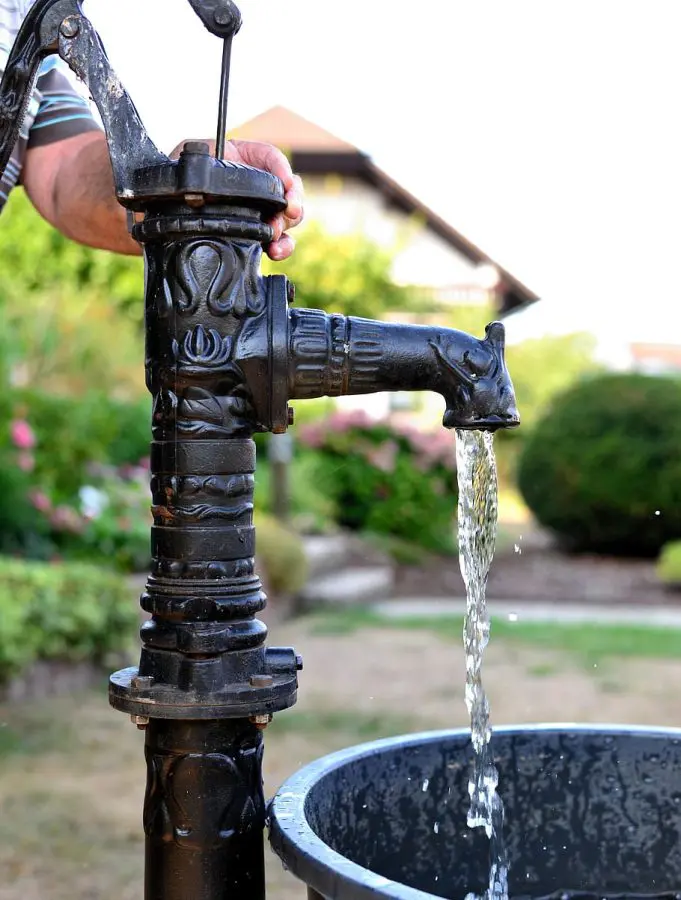
Groundwater, the silent sustainer beneath our feet, plays a pivotal role in quenching the thirst of both our crops and communities.
But what happens when we tap into this resource without a pause button? Let’s dive deeper into the challenges of groundwater management.
Unsustainable extraction and its consequences
Imagine having a savings account that you keep withdrawing from without making enough deposits. Eventually, the balance is going to run low, right? That’s the scenario with groundwater when we extract it unsustainably.
Depleting Water Tables: Over-extraction leads to dropping water tables. This means wells need to be dug deeper, increasing the cost and effort for farmers and communities.
Land Subsidence: Here’s a surprising twist – when groundwater is excessively extracted, the land above can actually sink! This phenomenon, known as land subsidence, can damage infrastructure, reduce land value, and even increase flood risks in certain areas.
Saltwater Intrusion: For coastal regions, over-extraction of groundwater can invite saltwater from nearby seas or oceans to fill the void. This saltwater can contaminate freshwater sources, making it unsuitable for agriculture and drinking.
Impact on Ecosystems: Groundwater doesn’t just serve us; it’s vital for wetlands, streams, and lakes. Over-extraction can dry up these habitats, affecting the flora and fauna that rely on them.
The consequences of unsustainable groundwater extraction are far-reaching. It’s a reminder that while this resource might be out of sight, it should never be out of mind. Proper management and mindful usage are key to ensuring that this underground treasure continues to support us for generations to come.
Saltwater Intrusion
The delicate dance between freshwater and saltwater is a natural phenomenon, but when the balance is tipped, things can get a bit salty. Let’s delve into the specifics of how and why this intrusion happens.
Effects of intensive irrigation and sea-level rise
Water, in its many forms, is always on the move. But sometimes, human actions and natural changes can push it in directions we might not expect.
Intensive Irrigation: Think of soil as a sponge. When we extract vast amounts of freshwater for irrigation, the sponge gets drier.
In coastal areas, this can create a vacuum effect, pulling saltwater from nearby seas or oceans into the groundwater reserves.
It’s like when you sip a drink with a straw, and as the level goes down, air (or in this case, saltwater) gets pulled in to fill the space.
Sea-Level Rise: As global temperatures rise, polar ice caps melt, leading to a rise in sea levels.
This isn’t just about more beach days! Higher sea levels mean that saltwater can push further inland, especially during high tides or storm surges.
This can lead to saltwater mixing with freshwater in aquifers, rivers, and estuaries.
The consequences? Well, crops aren’t too fond of salt. Saline water can hinder plant growth, reduce yields, and in severe cases, render land unfit for agriculture.
Additionally, saltwater intrusion can compromise drinking water sources, posing challenges for communities that rely on these freshwater reserves.
Recognizing the effects of intensive irrigation and sea-level rise on saltwater intrusion is the first step.
It underscores the need for sustainable water management practices and adaptive strategies to safeguard our precious freshwater resources.
Pollution from Agriculture

Agriculture, in its quest to feed the world, sometimes leaves behind traces that can impact our environment. One of the significant footprints?
Pollution in our water sources. Let’s dive deeper into the specifics of how farming practices can influence the purity of our waters.
Fertilizer run-off, pesticide use, and livestock effluents
Farming is a bit like crafting a recipe. You add a dash of this and a sprinkle of that, hoping for the perfect outcome. But what happens when some of those ingredients find their way into our water?
Fertilizer Run-off: Fertilizers are like vitamins for crops, helping them grow strong and yield more.
However, when applied in excess or during heavy rains, these nutrients can wash off fields and into nearby water bodies.
This can lead to nutrient pollution, causing problems like algal blooms, which not only affect aquatic life but can also make water unsafe for consumption.
Pesticide Use: Pesticides are used to keep pesky pests at bay. But, like that overzealous friend with the bug spray, sometimes they can do more harm than good.
When they wash into rivers and lakes, they can harm aquatic life and disrupt delicate ecosystems.
Plus, they can end up in our drinking water, posing health risks.
Livestock Effluents: Picture a large farm with hundreds of animals. Now, all these animals produce waste, and managing this waste is crucial.
If not handled correctly, livestock effluents can seep into groundwater or run off into rivers, carrying with them bacteria, viruses, and nutrients that can contaminate water sources.
Understanding the impact of these agricultural practices on water quality is essential.
It’s a call to action for farmers and policymakers alike to adopt practices that ensure bountiful harvests without compromising the health of our water bodies.
After all, clean water and thriving farms should go hand in hand.
Land Degradation
Land, with its rich tapestry of soil, minerals, and life, forms the foundation of our agricultural practices.
But like a canvas exposed to the elements, it can start to wear out if not cared for properly. Let’s delve into the factors that can tarnish this canvas.
Impact of human activities and climate change on soil quality
Soil is like the unsung hero of our environment, playing a pivotal role in supporting plant life, storing carbon, and filtering water. But what happens when this hero faces challenges?
Deforestation: Imagine removing the protective cover of a book. Trees, much like that cover, protect the soil.
When vast areas are cleared for agriculture or urbanization, the exposed soil becomes vulnerable to erosion by wind and water.
Intensive Farming: It’s like running a marathon without adequate rest.
Continuous farming without giving the land time to recover can strip the soil of essential nutrients, making it less fertile over time.
Overgrazing: Picture a buffet where everyone takes more than they can eat.
When livestock feed on land excessively, they can remove the grass cover, exposing the soil and making it prone to erosion.
Industrial Activities: Just as spilled ink can stain a white shirt, pollutants from industries can contaminate the soil, affecting its quality and health.
Climate Change: The changing climate patterns, with erratic rainfall and increasing temperatures, can alter the moisture content and health of the soil.
This can lead to desertification in some areas, where fertile land turns into barren patches.
Recognizing the impact of our actions and the changing climate on soil quality is crucial.
It’s a reminder that the land beneath our feet is not just dirt; it’s a living, breathing entity that needs care and respect.
By adopting sustainable practices, we can ensure that this foundation remains strong and vibrant for generations to come.
Solutions and Best Practices
We’ve all been there, right? Facing a challenge that seems insurmountable, but then finding that perfect solution that makes everything click.
In the world of agriculture, water challenges might seem like a steep mountain to climb. But guess what?
We’ve got some pretty nifty tools in our backpack to make that ascent smoother.
From innovative irrigation techniques to sustainable practices, there’s a world of solutions waiting to be explored.
Ready to discover these transformative strategies? Let’s jump right in!
Irrigation Management
Watering a garden isn’t just about turning on a hose; it’s about ensuring every drop counts. Similarly, in the vast fields of agriculture, managing irrigation is an art and science combined.
Upgrading and maintaining irrigation systems:
By upgrading and regularly maintaining irrigation systems, we ensure they run efficiently, delivering water precisely where it’s needed, reducing wastage, and ensuring crops get the right amount at the right time.
Water Management for Rainfed Agriculture
Not all farms have the luxury of regular irrigation. For those relying on the whims of the weather, managing water becomes even more crucial.
Techniques like supplemental irrigation and water harvesting:
It’s like having a backup plan when the main act doesn’t show up. Supplemental irrigation provides that extra boost during dry spells, while water harvesting techniques capture and store rainwater, ensuring there’s a reserve for drier days.
Sustainable and Productive Agricultural Practices
Farming isn’t just about sowing and reaping; it’s about doing so sustainably, ensuring we leave a healthy planet for future generations.
Strengthening water regulations: Just as traffic rules keep our roads safe, strong water regulations ensure that water usage in agriculture is sustainable and doesn’t harm the environment.
Incentives for efficient water use and pollution management: It’s like getting a gold star for doing your homework well.
By offering incentives, we encourage farmers to use water efficiently and manage pollution, ensuring both the land and water stay healthy.
Removing policies that support excessive water use: Sometimes, it’s about unlearning old habits.
By removing policies that inadvertently promote water wastage, we pave the way for a more sustainable agricultural future.
Global Initiatives and Collaborations

Imagine the world as one big team, where every player brings their unique skills to tackle the challenges of water in agriculture.
It’s like a global relay race, where organizations pass the baton, each contributing to the collective goal.
In this section, we’ll spotlight some of the key players and their game-changing strategies.
Ready to see how global teamwork is making the dream work? Let’s journey through these international efforts!
OECD’s efforts in promoting sustainable water management in agriculture
Ever heard of the OECD? Think of them as the wise coach guiding the team with strategies and insights.
The Organisation for Economic Co-operation and Development (OECD) has been at the forefront of promoting sustainable water management in agriculture.
They’re not just about talking the talk; they’re about walking the walk. By gathering data, analyzing trends, and offering policy recommendations, the OECD ensures that water management in agriculture is both efficient and sustainable.
It’s like having a playbook that’s constantly updated with the best strategies, ensuring that every drop of water is used wisely and effectively.
UNEP’s initiatives and recommendations for sustainable water use
Now, let’s talk about the United Nations Environment Programme (UNEP). Picture them as the team’s nutritionist, ensuring that every player is hydrated and healthy.
UNEP has been instrumental in highlighting the importance of sustainable water use in agriculture.
Through their initiatives, they offer a global perspective on the challenges and solutions.
From research projects to on-ground implementations, UNEP’s recommendations have been pivotal in shaping water policies around the world.
It’s like having a trusted guide, pointing out the best paths to ensure that our agricultural practices are in harmony with nature.
Water Problems In Agriculture FAQs

You know those moments when you’re assembling a piece of furniture and you find yourself with extra screws, leading to a flurry of questions?
Well, when it comes to water problems in agriculture, we all have our set of burning questions. And guess what?
We’ve gathered the most frequently asked ones right here, just for you! In this section, we’ll dive into these FAQs, breaking down the complexities and serving up clear, concise answers.
Ready to quench your curiosity? Let’s tackle these questions head-on!
Q: How does water scarcity impact global food production?
A: Water scarcity plays a pivotal role in global food production. Without adequate water, crops can’t grow to their full potential, leading to reduced yields.
In severe cases, water scarcity can result in complete crop failures. This not only affects the local food supply but, when magnified on a global scale, can lead to food shortages, increased prices, and even famine in extreme situations.
Q: What are the main causes of water scarcity in agriculture?
A: Several factors contribute to water scarcity in agriculture. Natural causes include prolonged droughts and changing rainfall patterns due to climate change.
Human-induced factors encompass over-extraction of groundwater, inefficient irrigation practices, pollution of freshwater sources, and competing water demands from other sectors like industry and domestic use.
Q: How can farmers adapt to changing water conditions?
A: Farmers can adapt by embracing water-efficient farming practices such as drip irrigation, rainwater harvesting, and mulching.
They can also diversify crops to include varieties that are drought-resistant or suited to local water conditions.
Additionally, staying informed about weather forecasts and adopting modern technologies can help farmers plan their water usage more effectively.
Q: What are the environmental consequences of over-irrigation?
A: Over-irrigation can lead to a host of environmental issues. It can cause waterlogging of the soil, which affects root health and reduces oxygen availability for crops.
It can also lead to soil salinization, where excess water evaporates, leaving behind salt residues that can harm crops.
Additionally, over-irrigation can deplete local water sources and contribute to the runoff of fertilizers and pesticides into nearby water bodies, harming aquatic life and water quality.
Why is water conservation crucial in farming?
Alright, imagine we’ve been on this enlightening road trip, exploring the vast landscapes of water challenges in agriculture.
As we approach the end of our journey, it’s time to pull over, reflect on what we’ve learned, and gaze into the horizon of what’s to come.
In this conclusion, we’ll tie up all the loose ends, revisit the highlights, and take a peek into the future of water in agriculture.
Ready for a glimpse of tomorrow while standing firmly in today? Let’s wrap things up and dream a little about the road ahead!
The Future Outlook for Agricultural Water Issues: Conclusion

As we near the end of our enlightening journey through the world of water in agriculture, it’s a bit like reaching the final chapters of a gripping novel.
We’ve navigated the challenges, celebrated the solutions, and now it’s time to envision the path forward.
Let’s take a moment to reflect on the bigger picture and the roles we all play in shaping the future.
The importance of sustainable water management for the future of agriculture
You know how essential a steady heartbeat is to our well-being? Sustainable water management is the heartbeat of agriculture.
As the global population grows and climate patterns shift, the demand for food and water will only intensify.
Ensuring that water is used sustainably in agriculture is not just about quenching the thirst of today’s crops.
It’s about securing food for future generations.
It’s about making sure that, decades down the line, our fields remain green, our harvests bountiful, and our planet healthy.
Call to action for policymakers, farmers, and the general public
Alright, here’s the deal: this isn’t just a story about farmers or policymakers. It’s a story about all of us.
Policymakers have the power to shape regulations that promote sustainable practices.
Farmers, with their hands in the soil, can adopt techniques that make every drop count.
But what about the rest of us? We can be conscious consumers, support sustainable farming, and advocate for policies that prioritize the environment.
It’s like being part of a choir; each voice matters, and when we all sing in harmony, the impact can be profound.
So, whether you’re a policymaker, a farmer, or just someone who enjoys a good meal, let’s come together and champion the cause of water in agriculture.
Learn more about Kelp Farming an emerging form of sustainable agriculture


